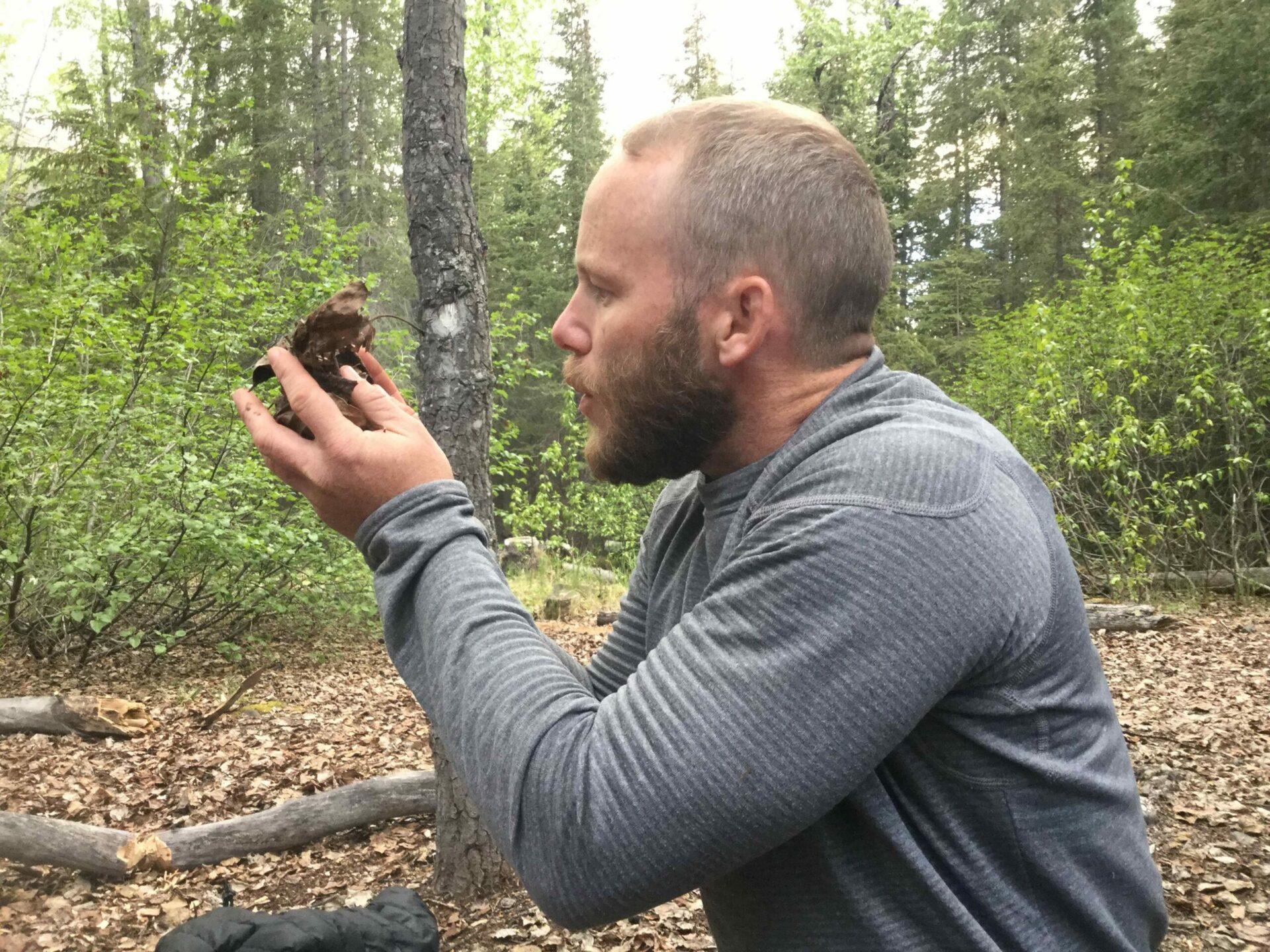Earlier this month I spent 2 weeks in Alaska with my dear friend, Clay, and his older brother, Luke (Dr Stay Unbroken). I’ve been back to Alaska several times in the last 10 years, but this was the first time where I felt like a true naturalist abroad. As I walked through the woods, I was aware of perceiving the rustling leaves, the speaking birds, the crystalline waters through a different lens than I had on previous trips. It was fascinating to do many of the same things while in Alaska but with a keener sense of awareness on this trip.
One of the threads running through my recent trips has been fire. On each of my trips I’ve made a point of trying to start a fire using native materials. My first trip I struggled for 2 days trying to use soggy hemlock with no luck before resigning myself to a cold and wet 4 days in the woods without a fire. A couple years later I went back to the same spot and decided to avoid conifers. I came across a downed balsam poplar stretching over Winner Creek in Girdwood, offered gratitude, and set to carving a fire-by-friction set from the tree. Within an hour I had a fire.
I’ve used a bunch of different types of trees over the years, but have mostly avoided conifers, in part because of my experience in Alaska. Many conifers have resin canals in the wood which, when rubbed together, liquify and lubricate the wood reducing friction and making it nearly impossible tough to generate enough dust and heat to make a coal. The resinous latewood of fir and hemlock make them gloss up and equally challenging. But I’ve heard good things about spruce and some of my experiments in Vermont with white pine have proved exceptionally easy. Being surrounded by a forest of Sitka spruce I figured it was about time to look again at Alaskan conifers.
On our third night hiking the Resurrection Pass trail from Hope to Cooper Landing, Luke, Clay and I camped along some small creek that drains into Juneau Creek, just south of Juneau Lake. When we arrived, Luke pointed out what he thought might be a nest (see image above). I initially thought it could be a squirrel drey, but looking around they were everywhere and I realized they were giant witch’s brooms. The tumorous growth is a dense cluster of buds, an abnormal growth pattern caused by the spruce broom rust fungus, Chrysomyxa arctostaphyli. I even found one that had a varied thrush nest buried deep in its tangled growth.
In my wanderings, I found a dead spruce that had come down across the path. I used my hatchet to cut out a section and carve a fire-by-friction set. Ideally I would have had a harder wood or stone for the hand hold. The handhold needs to generate almost no friction, otherwise it can heat up and drop little embers on your hands while you work and make the process much harder. Adding a lubricant to the hole where the spindle goes into the handhold can reduce friction. You can use earwax, pitch, soap, or pretty much any oily substance. The balsam poplar buds had all burst open and the resinous (balsam-y) bud scales were littered about on the ground. I packed these into the handhold groove and found them to work perfectly. The set as a whole was a joy to use. After about 20 minutes Luke was able to use it to start a fire of his own. A nice happy birthday present!






